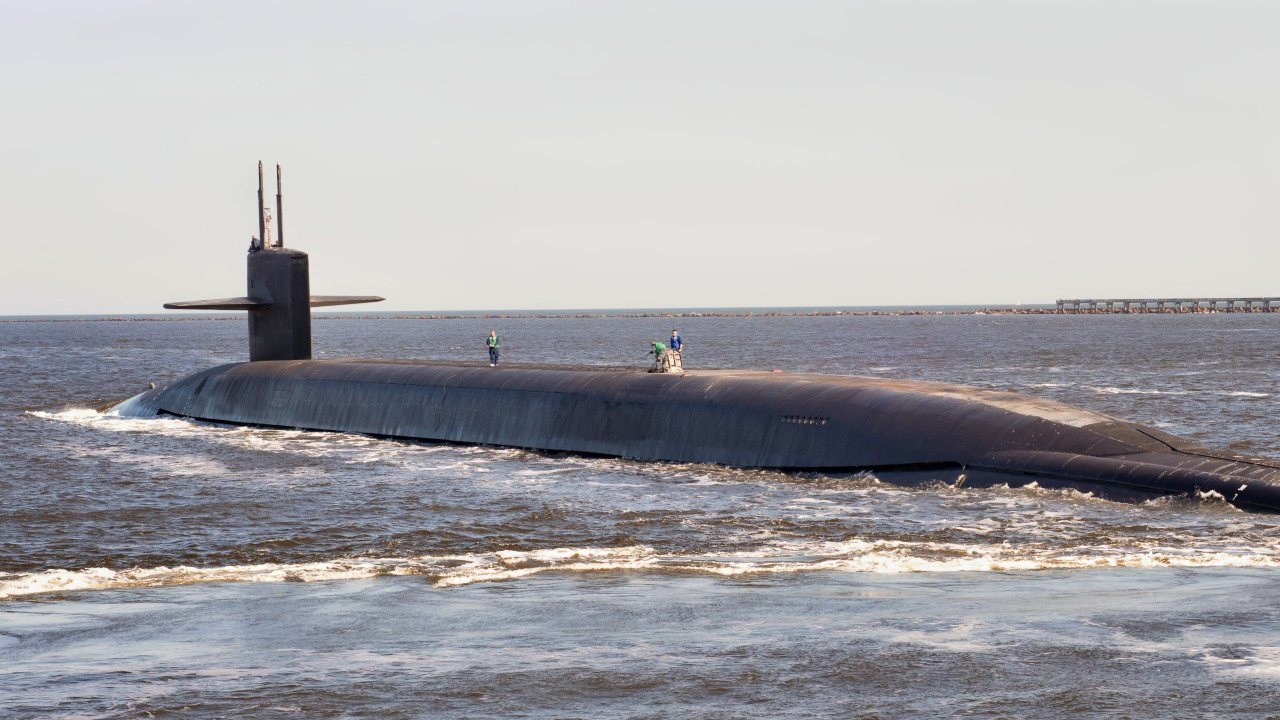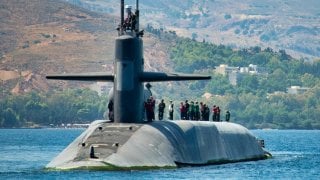The Ohio-Class Submarine 'Problem' Won't Be Easy To Fix
Summary and Key Points: The U.S. Navy’s 14 Ohio-class ballistic missile submarines are crucial for America's nuclear triad, providing second-strike capabilities with over 200 submarine-launched ballistic missiles. However, as these submarines near the end of their service lives, delays in the Columbia-class and Block V Virginia-class replacements pose a risk to national security.

-The last four Ohio submarines, converted to guided-missile submarines (SSGNs), will retire soon, with Block V Virginia-class submarines intended to replace them.
-These new submarines will feature additional vertical launch tubes and advanced missiles. However, staffing and efficiency issues have delayed their production by at least 24 months, potentially requiring the extension of the Ohio-class SSGNs’ service lives.
The Ohio-Class Submarine Replacement Problem
The U.S. Navy’s fleet of Ohio-class ballistic missile submarines shape the sea-based arm of America’s nuclear triad.
The service’s 14 Ohio-class SSBNs, armed with over 200 submarine-launched ballistic missiles, can launch these weapons from submerged positions anywhere around the globe if a nuclear crisis arises.
The Ohio boats provide the U.S. with second-strike capability. The maintenance of these ships and the addition of their successors to the fleet is absolutely essential to U.S. national security. As the Ohio submarines near the end of their intended service lives, however, the Columbia-class and Block V Virginia-class vessels meant to replace them might not arrive on schedule.
From SSBNs to SSGNs
During the Cold War, the first Ohio submarines were conceptualized around the notion of extended patrols. As part of this strategy, the boats would loiter in undisclosed locations, always prepared to launch a retaliatory strike at a moment’s notice.
After the Soviet Union collapsed in the early 1990s, however, the 1994 Nuclear Posture Review lowered the U.S. inventory of ballistic submarines from 18 boats to 14. The last four submarines were converted into guided-missile submarines.
The Ohio, Michigan, Florida, and Georgia submarines re-entered service under their new designations by 2008. These refitted SSGNs are equipped with 154 Tomahawk land attack missiles, in addition to torpedo-launched Harpoon anti-ship missiles. As a more versatile platform than their SSBN counterparts, the Ohio SSGNs can also be outfitted to enable special forces operations, including with torpedo tubes that can be converted into swimmer lockout trunks. For even greater flexibility, these submarines can equip the Dry Combat Submersible, a mini-sub useful in coordinating the actions of those special forces.
How the Block V Virginia Boats Will Fulfill the SSGN Role
The Navy’s four Ohio-class guided-missile submarines provide the service with unparalleled missile-lugging capabilities. But two of them are set to retire in 2026, and two in 2028. While the Columbia-class boats are slated to replace the Ohio SSBNs, the latest Virginia-class variant is expected to replace the Ohio SSGNs. According to Electric Boat president Kevin Graney, the upcoming Block V Virginia submarines will be fitted with an additional 84-foot section that will accommodate four more vertical launch tubes. These boats will feature the latest Tomahawk Block V missiles, which will add an anti-ship capability to the existing land-attack mode.
As detailed by Naval News, the Block V submarines may also be fitted with new hypersonic boost-glide vehicles: “Because the Block Vs have more VLS slots it seems natural that they will be among the first submarines to carry the hypersonic missiles. With a total of 6 VLS tubes they could carry a mixed load of, perhaps, 12 hypersonic missiles (3 in each of the aft 4 tubes) and 12 Tomahawks in the forward tubes.”
Each submarine is expected to cost around $4.3 billion per unit to build. Compared to preceding Seawolf-class vessels, this is actually not too pricey.
While these boats should make a suitable replacement for the Ohio-class SSGNs, delays to their introduction bode poorly for the Navy’s capacity of missiles at sea. Last year, the Government Accountability Office revealed the latest Virginia boats were suffering from staffing and work efficiency issues and would therefore be delayed by at least 24 months.
“While the fixed price incentive contract set target and ceiling prices for each submarine, program officials reported that the VCS shipbuilders have not met the work efficiency and material cost estimates that informed the target pricing,” according to the report. “Consequently, the Navy plans to request more funds to complete Block V, as its prior budget requests covered the target prices, but not up to the ceiling prices.”
Until the Block V boats are commissioned and sea-ready, the service lives of the Ohio-class SSGNs could be extended to prevent a lapse in missile capability. The Navy is currently on pace to prolong the service lives of some of its Ohio-class SSBNs, since the Columbia-class boats are also facing delays.
About the Author: Maya Carlin
Maya Carlin, National Security Writer with The National Interest, is an analyst with the Center for Security Policy and a former Anna Sobol Levy Fellow at IDC Herzliya in Israel. She has by-lines in many publications, including The National Interest, Jerusalem Post, and Times of Israel. You can follow her on Twitter: @MayaCarlin.
Image Credit: Creative Commons.


